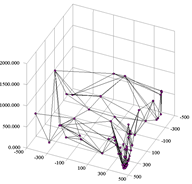One of the challenges to finding optimal solutions is the coupling of variables. If we could change one variable at a time, the search process would be so much easier. But in most problems the variables are strongly coupled, so the best value for one variable depends on the values of many other variables.
Often, we have no control over this variable coupling, since it is inherent in the physics model that defines our objectives and constraints. In these cases, we need a powerful optimization search strategy like SHERPA to figure out the complexities of the design landscape and to produce an optimized solution.
But in some cases we make this task harder than it needs to be because of how we represent the problem. That is, sometimes the way we define the problem creates unnecessary coupling or increases the complexity of existing coupling among variables. This makes the optimization search harder, and may decrease the chance of finding the optimal solution within our limited optimization search budget. The good news is that we can often alleviate this situation with a different representation. Continue reading
